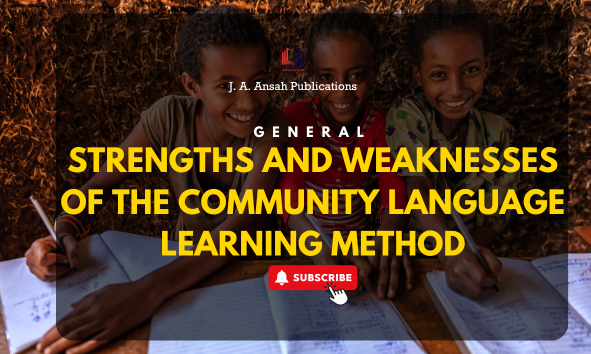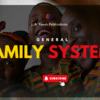STRENGTHS AND WEAKNESSES OF THE COMMUNITY LANGUAGE LEARNING METHOD
INTRODUCTION
Community Language Learning (CLL) is a humanistic, learner-centred approach that has profound implications for language teaching. By emphasising emotional safety, learner autonomy and social interaction, CLL creates a rich, supportive classroom environment where learners feel stimulated to communicate and take risks in the target language.
STRENGTHS OF THE COMMUNITY LANGUAGE LEARNING METHOD
1. Emotional Support for Learners: One of the method’s greatest strengths is its emphasis on emotional support. By creating a nurturing, non-threatening environment, learners are more likely to take risks and engage with the target language without fear of failure. This approach promotes greater confidence and helps to build long-term motivation for language learning (Curran, 1976).
2. Promotes Effective Communication: CLL emphasises meaningful, real-life communication. Students are encouraged to use the language for authentic purposes, engaging in dialogues that are relevant to their daily lives. This approach helps learners develop practical communication skills that they can use outside the classroom (Richards & Rodgers, 2014).
3. Creates a Strong Sense of Community: The group-oriented nature of CLL fosters a strong sense of community among learners. Peer collaboration and mutual support are key components of the method, which makes learners feel less isolated and more motivated to engage with their language learning.
4. Learner-Centred: CLL’s focus on the individual needs of each learner creates a tailored learning experience. This individualisation allows students to progress at their own pace, ensuring that they receive the support they need without feeling rushed or left behind.
5. Encourages Autonomy: Over time, CLL encourages learners to take more responsibility for their learning. As they become more confident, learners transition from relying on the teacher to using the target language independently. This autonomy fosters lifelong learning habits and self-directed language acquisition (Curran, 1976).
6. Adaptability: CLL can be adapted to various language levels, as it is flexible and responsive to the needs of the learners. The teacher can tailor the content and activities to suit the learners’ abilities, making the method effective for both beginners and advanced learners.
WEAKNESSES OF THE COMMUNITY LANGUAGE LEARNING METHOD
1. Teacher Dependence: One of the main drawbacks of CLL is that it relies heavily on the teacher’s ability to facilitate the learning process. Teachers need to be skilled at providing linguistic input, offering emotional support and managing group dynamics. Inexperienced teachers or larger classes may struggle with this level of engagement, resulting in less effective learning experiences.
2. Limited Grammar Instruction: Whereas CLL encourages learning through communication, it does not deliver formal grammar instruction. This can be a disadvantage for learners who prefer structured learning or need a more analytical approach to understanding the language. Some students may feel that they lack a solid foundation in grammar, which could impact their overall language competence.
3. Not Well-Suited for Large Classes: CLL works best in small groups where the teacher can offer personalised attention and maintain close interactions with learners. In larger classes, it becomes more problematic to manage group dynamics, provide tailored support, and ensure that every learner has the opportunity to participate.
4. Overemphasis on Emotional Support: The focus on emotional support and psychological safety, while important, may overshadow other aspects of language learning, such as vocabulary acquisition or formal grammar instruction. Some learners may feel that their progress is slow if too much emphasis is placed on the emotional and social aspects of learning
5. Time-Consuming: The process of building trust, providing personalised feedback and conducting reflective sessions can be time-consuming. The emphasis on group activities and peer support can also require substantial time investment, which might not be feasible in fast-paced, curriculum-driven contexts.
6. Potential for Inconsistent Progress: Because CLL is tailored to individual needs, some students may progress faster than others. Learners who are more comfortable expressing themselves or who have sounder language foundations may advance swiftly, while others may require more time and support. This can lead to uneven progress within a single group.
Conclusion
Community Language Learning offers a unique and humanistic approach to language teaching that prioritises emotional support, communication and social interaction. While the method has its limitations, including teacher dependence and a lack of formal grammar instruction, its strengths in fostering a supportive and collaborative learning environment make it a valuable approach for many learners. By addressing the psychological and emotional needs of learners, CLL helps create a safe space for language learners to grow both personally and linguistically.



